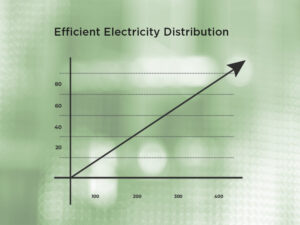**Energy Efficiency Introduction**
In today’s industrial environment, achieving energy efficiency is a top priority. Low Voltage (LV) Distribution Systems are essential in this effort, as they optimize power distribution, integrate with energy-efficient technologies, and improve overall power quality.
**Energy Efficiency What is a Low Voltage Distribution System? **
A Low Voltage Distribution System is the final stage of the electrical power distribution network, responsible for delivering electricity from distribution transformers to end-users. Typically operating at voltages below 600 volts, these systems ensure the safe and efficient distribution of electrical power within industrial facilities, commercial buildings, and residential areas.
**Energy Efficiency Key Components of Low Voltage Distribution Systems **
- **Transformers:** These devices reduce high or medium voltage from the primary distribution network to low voltage levels suitable for end-use applications.
- **Circuit Breakers:** They protect the system by cutting off electricity flow during overloads or short circuits.
- **Cables and Conductors:** These transmit electrical power from distribution panels to various devices and machinery within a facility.
- **Distribution Panels (Switchboards):** Acting as the central hub, they direct electrical power to different circuits and provide control and protection mechanisms.
- **Protective Devices:** Including fuses, surge protectors, and residual current devices, these safeguard the system against electrical faults and ensure safety.
**How Low Voltage Distribution Systems Work**
Electricity is transmitted from power generation sources through high-voltage transmission lines to substations, where the voltage is reduced to medium levels. Distribution transformers then further step down the voltage to low levels, typically below 600 volts. The LV Distribution System distributes this low-voltage electricity to various circuits within an industrial facility, ensuring safe and efficient delivery to machinery, lighting, and other equipment.
**Benefits of Low Voltage Distribution Systems**
- **Energy Efficiency:** By reducing energy losses during transmission and optimizing power distribution, LV systems enhance overall energy efficiency.
- **Safety:** Protective devices and proper grounding minimize the risk of electrical hazards, ensuring a safer environment for personnel and equipment.
- **Reliability:** Robust design and protective mechanisms ensure a continuous power supply, reducing downtime and maintaining operational continuity.
- **Scalability:** LV systems can be easily expanded or modified to meet changing power demands within industrial facilities.
**Applications of Low Voltage Distribution Systems**
- **Industrial Facilities:** Powering machinery, production lines, and control systems.
- **Commercial Buildings:** Supplying electricity to lighting, HVAC systems, and office equipment.
- **Residential Areas:** Delivering power to household appliances, lighting, and heating systems.
- **Data Centers:** Ensuring reliable power distribution to servers, cooling systems, and networking equipment.

**Challenges in Low Voltage Distribution Systems**
- **Voltage Drops:** Over long distances, voltage levels can decrease, affecting the performance of connected equipment.
- **Harmonic Distortion:** Non-linear loads can introduce harmonics, leading to inefficiencies and potential equipment damage.
- **Overloading:** Exceeding the system’s capacity can cause overheating and failures.
- **Maintenance Requirements:** Regular inspections and maintenance are necessary to ensure system reliability and safety.
**Future Trends in Low Voltage Distribution Systems**
- **Integration with Smart Technologies:** Incorporating IoT devices and advanced monitoring systems for real-time data analysis and control.
- **Renewable Energy Integration:** Adapting LV systems to accommodate distributed energy resources like solar and wind power.
- **Energy Storage Solutions:** Implementing battery storage to improve energy management and reliability.
- **Enhanced Cybersecurity Measures:** Protecting LV systems from cyber threats as they become more interconnected.
**Implementing LV Distribution Systems for Energy Efficiency**
To maximize the energy efficiency benefits of LV Distribution Systems in industrial facilities, consider the following best practices:
- **Regular Maintenance:** Conduct routine inspections and maintenance to ensure all components operate efficiently and safely.
- **System Upgrades:** Replace outdated equipment with modern systems that offer advanced energy management features and better integration with energy-efficient technologies.
- **Load Analysis:** Perform detailed load analyses to understand energy consumption patterns and configure LV panels for more effective power distribution.
- **Training and Awareness:** Educate facility personnel on the importance of energy efficiency and the role of LV panels in achieving energy-saving goals.